| |

Welcome to the propellers
RFC WW1
Propellers Page.
ROYAL FLYING CORPS
Spitfire Spares manufactures wooden Propellers
for the following aircraft. We manufacture these props by hand using
100% traditional methods and materials. We can supply
Props for the following aircraft .Bristol Scout ,
DH 5 , DH 2 , Sopwith Triplane & Sopwith Strutter , Sopwith Baby , Paragon 2 & 3
blade props ( American) , Morane Saulnier , Tiger Moth and Genet.
The regulations for using these props
for flying aircraft vary greatly from Country to Country . We make them in exactly the same way as the
originals with dowels and laminates of Ash & Mahogany . We cannot offer
these for flying use and so the purchaser would have to satisfy whatever
regulations apply. They vary in length from six to Eight Feet.
You may specify materials and glue used if
required as a pre order
All Propellers
available some in stock and some made to order please
email your requirements.
Please note
there are no shipping charges made in the shopping cart. Each prop will be sent
at cost.
Will arrange shipping worldwide. We send
using a special courier and costs vary for each destination.
They are competitive and you can of coarse collect personally or arrange your
own shipping. It will be
sent at cost plus a £10 charge for packing. I will protect
the blade tips with thick cardboard , expanding foam and seal with layers
of bubble wrap. If shipping abroad we advise you have a
wooden crate made. If you want a crate made we can do this but
it will cost extra.
|
Click on the
pictures to enlarge
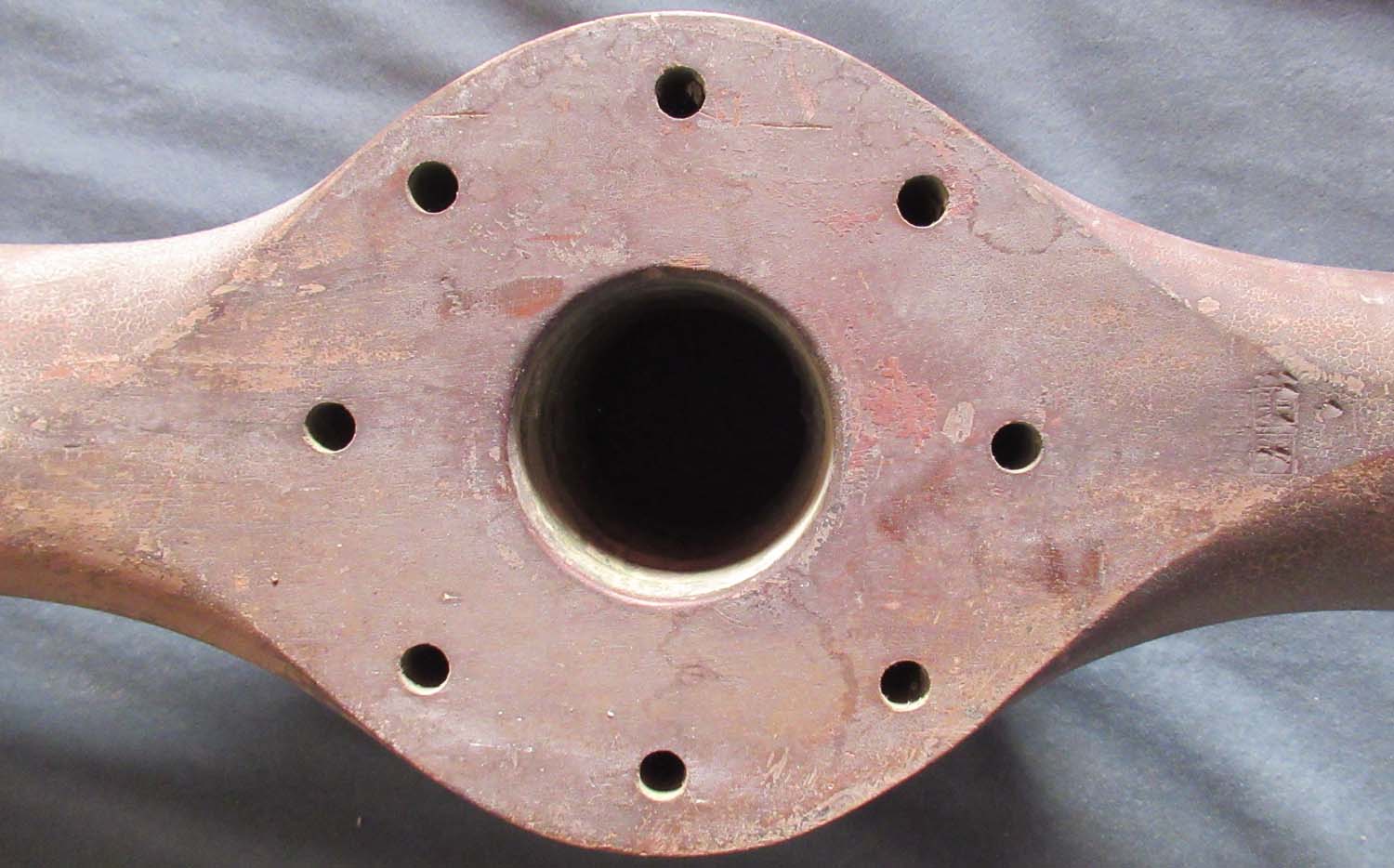
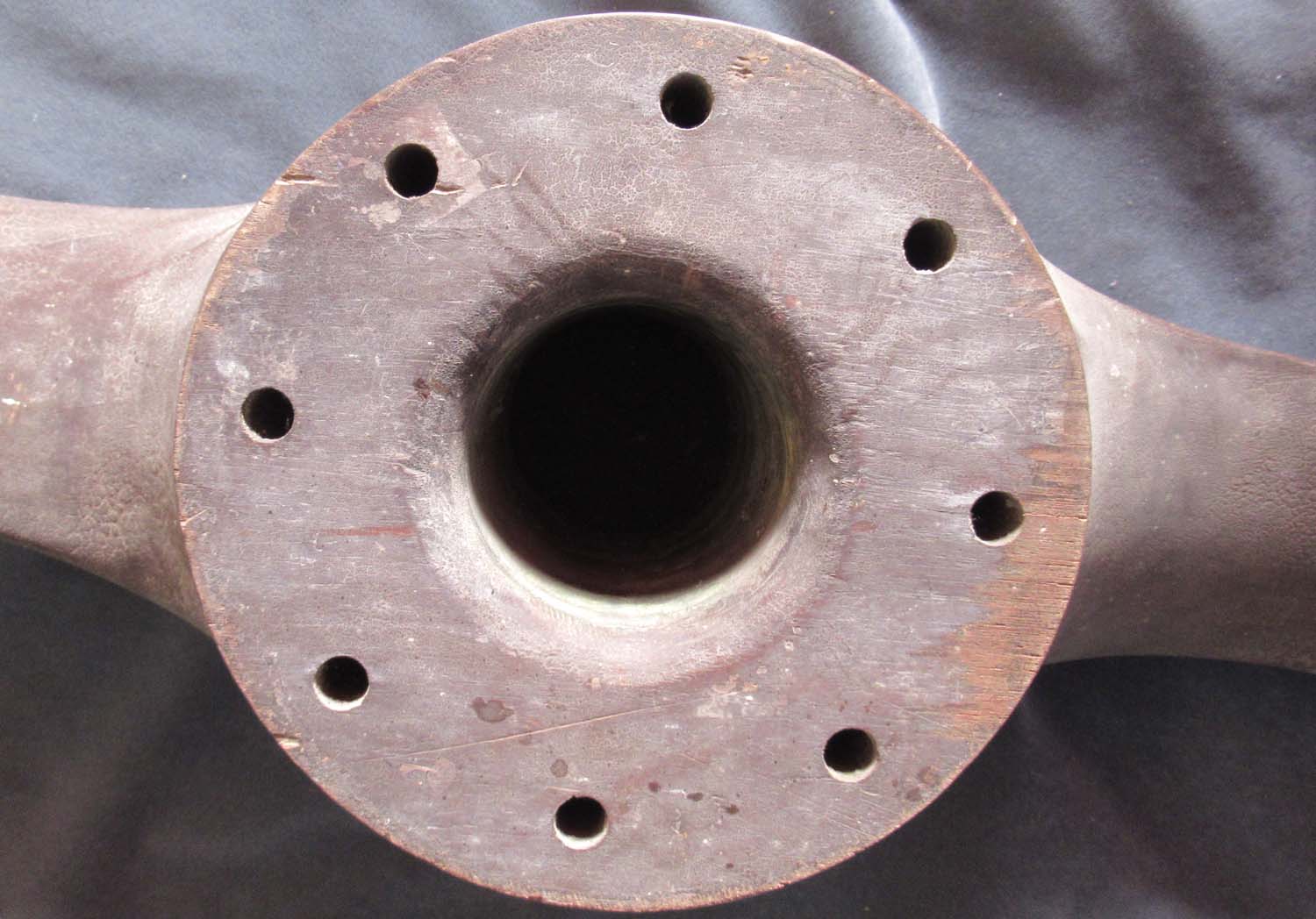
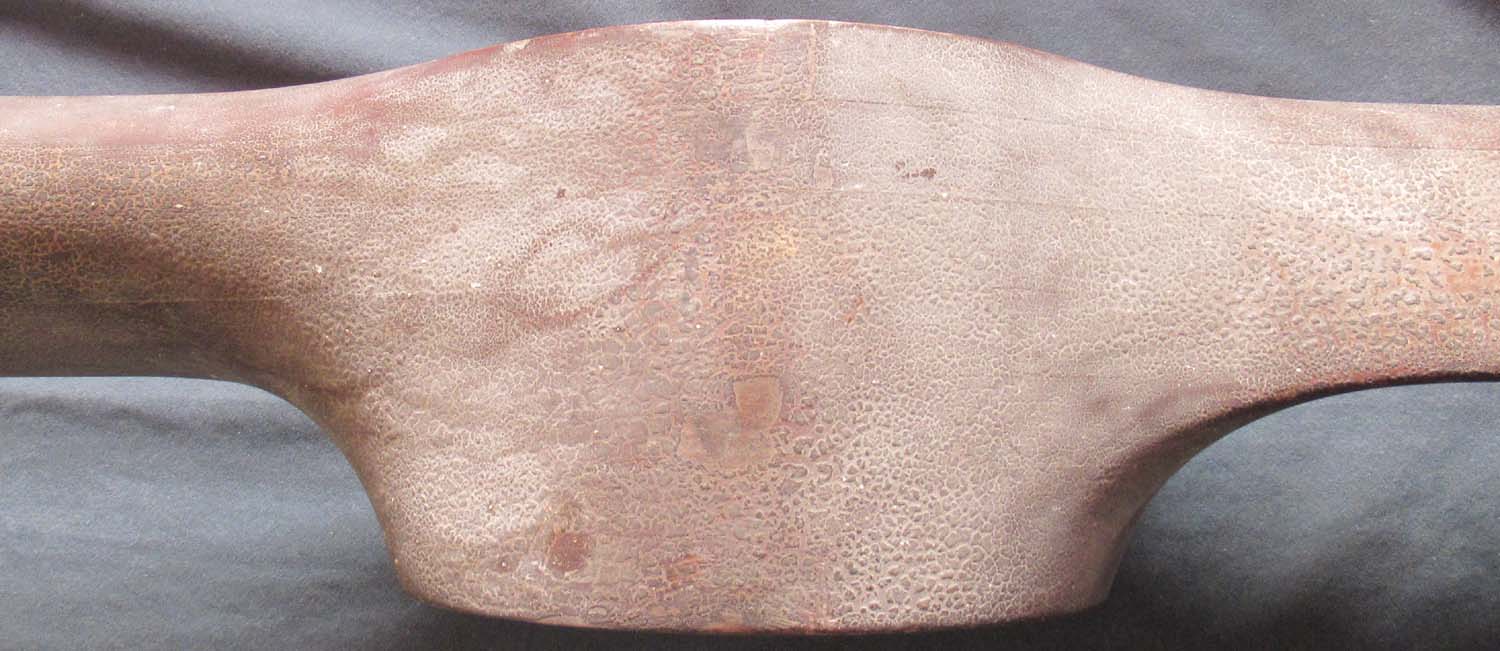
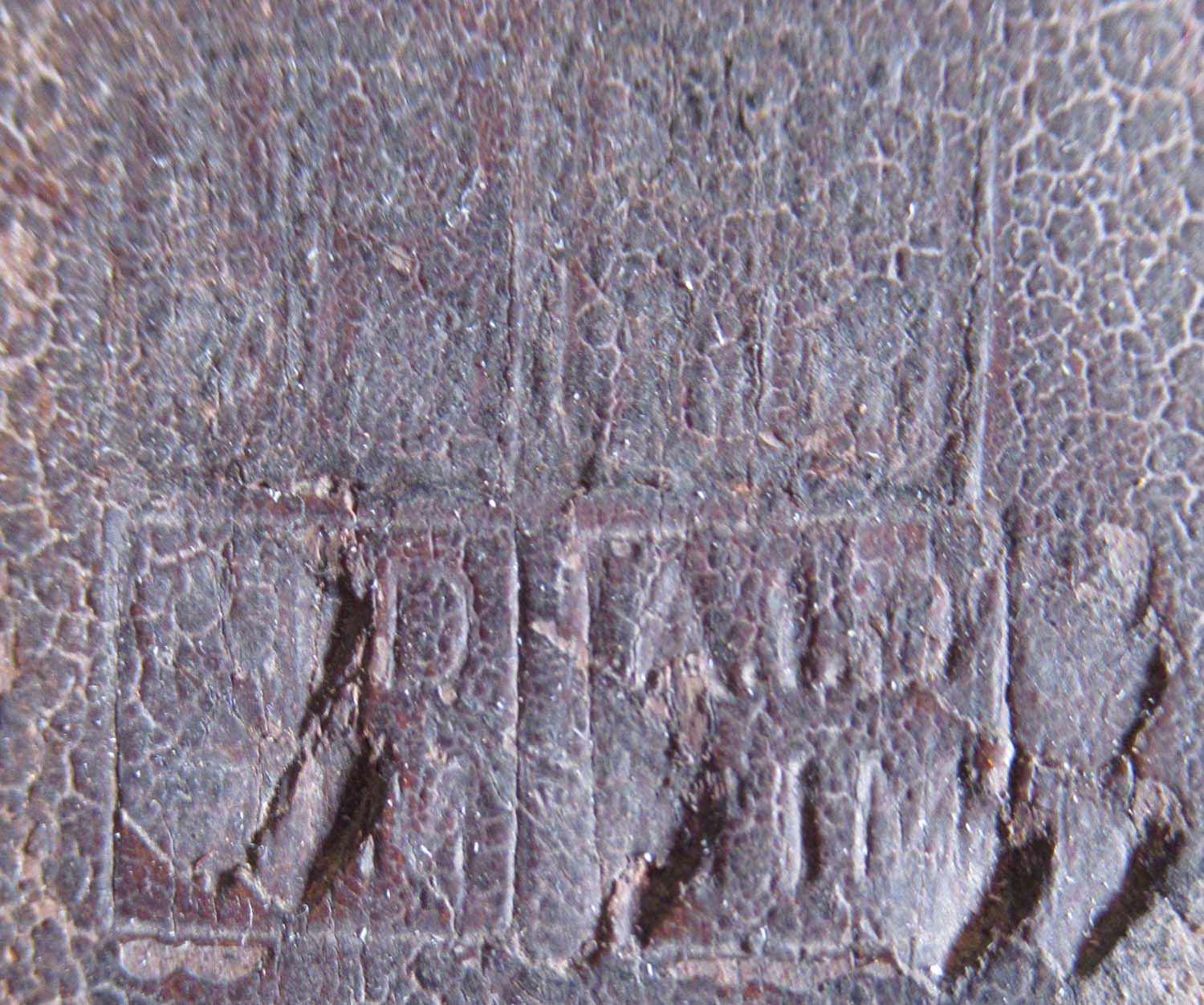
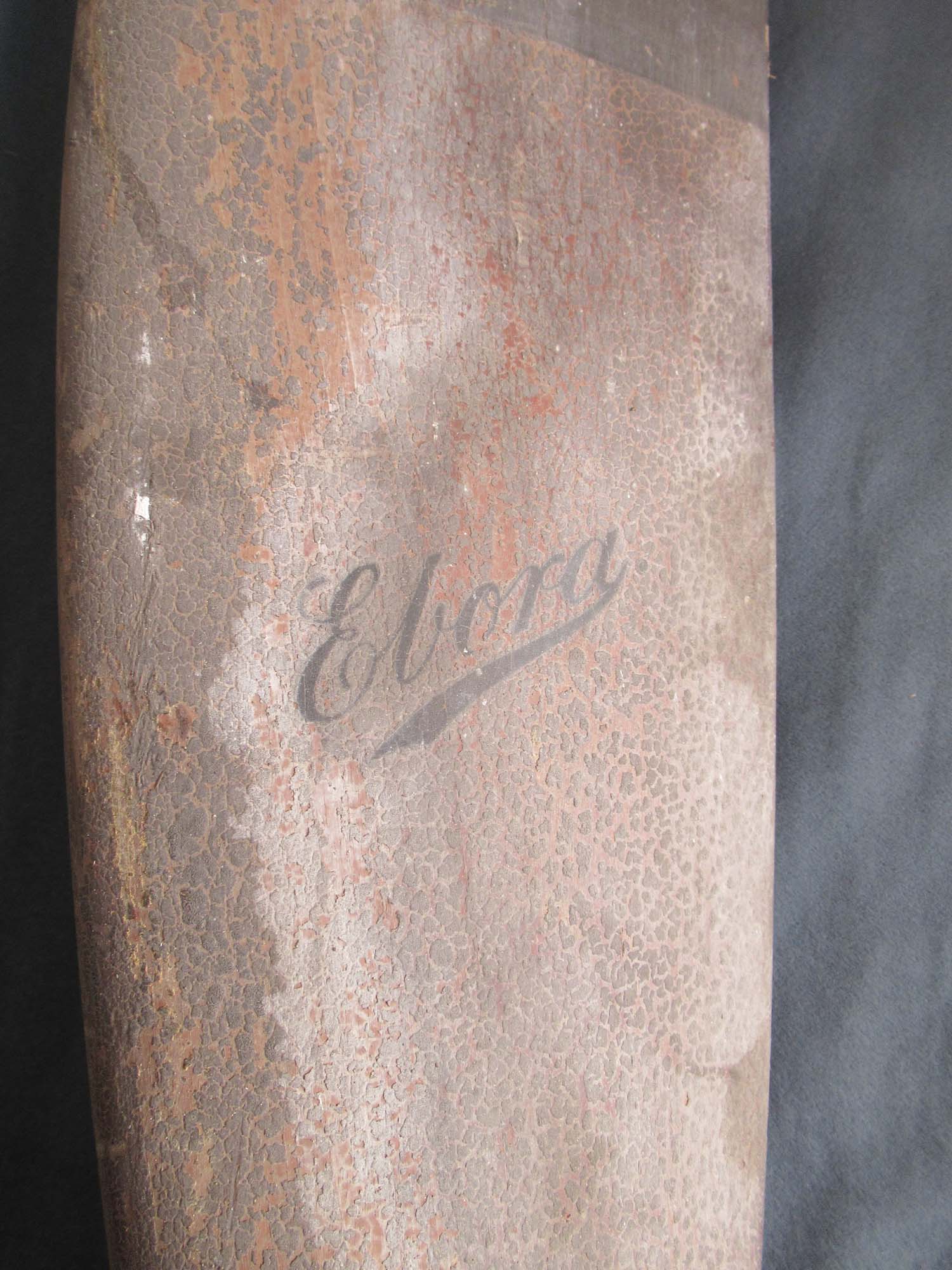
Out of stock
This Propeller is very heavy and will
be sent at cost
Please Contact us for postage quotes
|
WWI Spad S VII Fighter Wooden Propeller (pg1 prop)
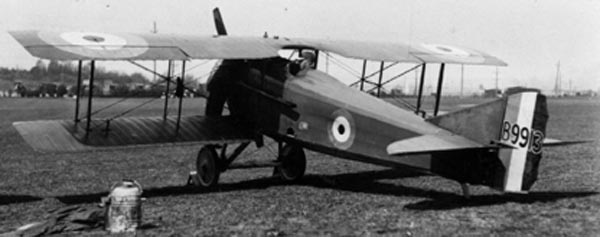
Seen above a British built Spad.
Here is an amazingly original Propeller from a Spad S
VII it has not been
restored or messed around with in any way. There are no
delaminations the only age related damage if the canvas
covering has come loose on the tips.
The SPAD S.VII was the first
of a series of highly successful biplane fighter aircraft
produced by Société Pour L'Aviation et ses Dérivés (SPAD)
during the First World War.
Like its successors,
the S.VII was renowned as a sturdy and rugged aircraft with
good climbing and diving characteristics.
It was also a stable
gun platform, although pilots used to the more manoeuvrable
Nieuport fighters found it heavy on the controls. It was
flown by a number of the famous aces, such as France's
Georges Guynemer, Italy's Francesco Baracca and Australia's
Alexander Pentland.
Click on the
pictures to enlarge
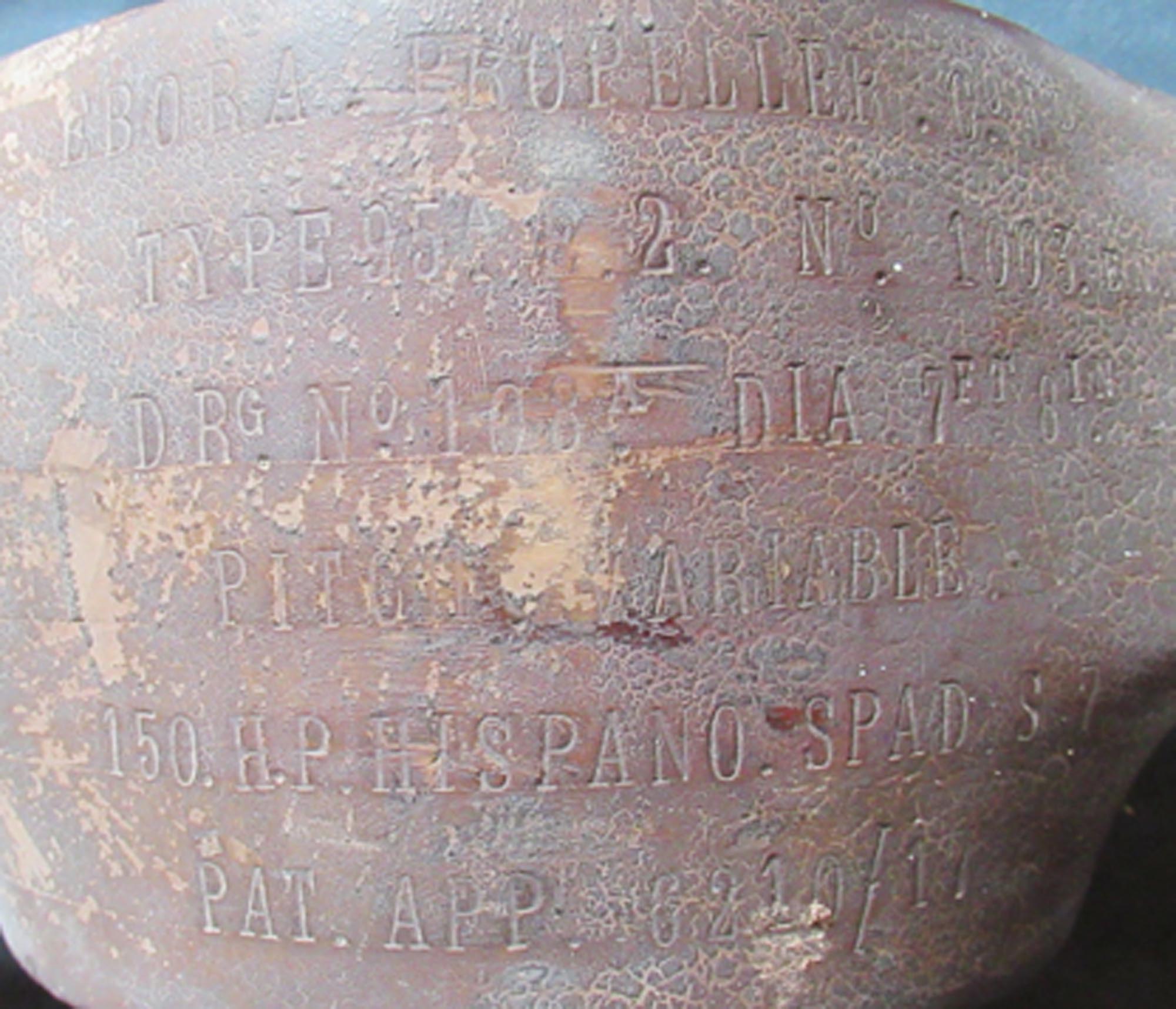

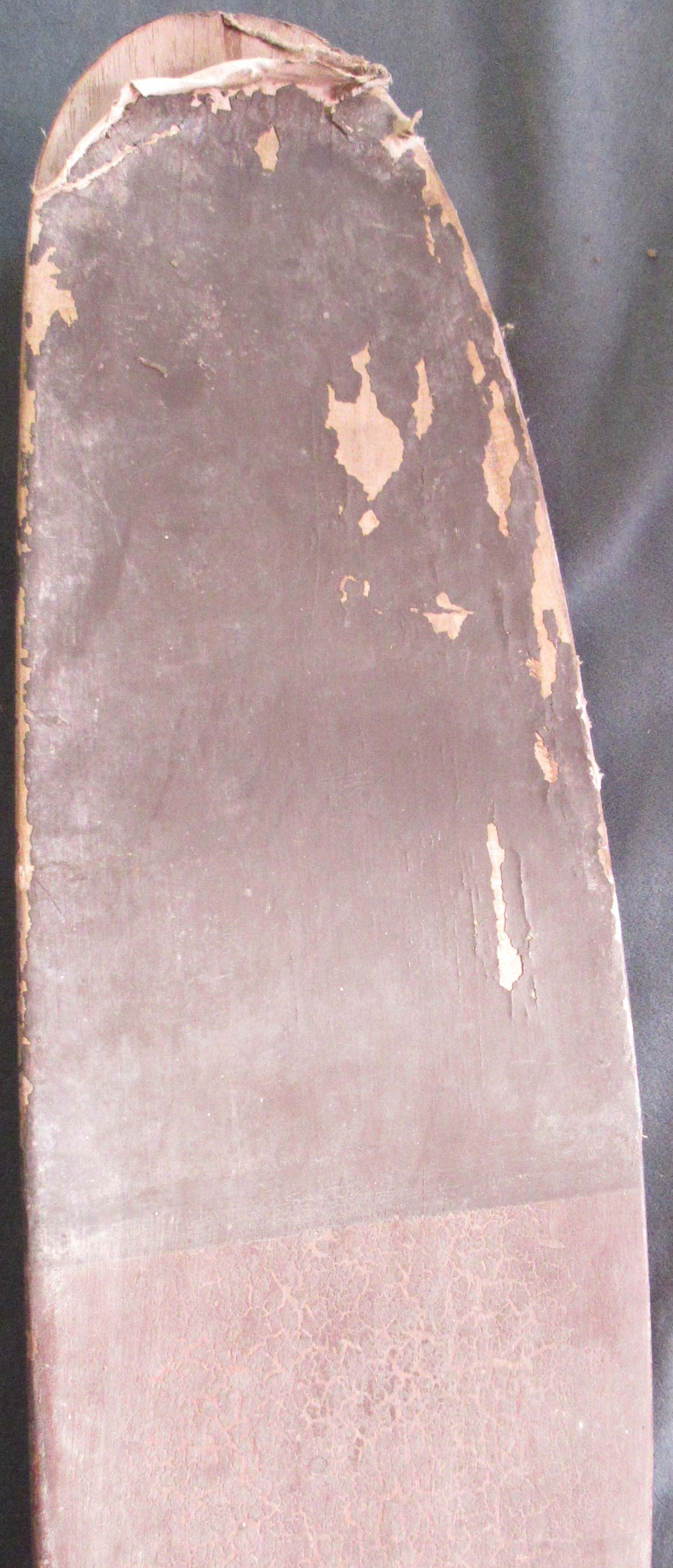
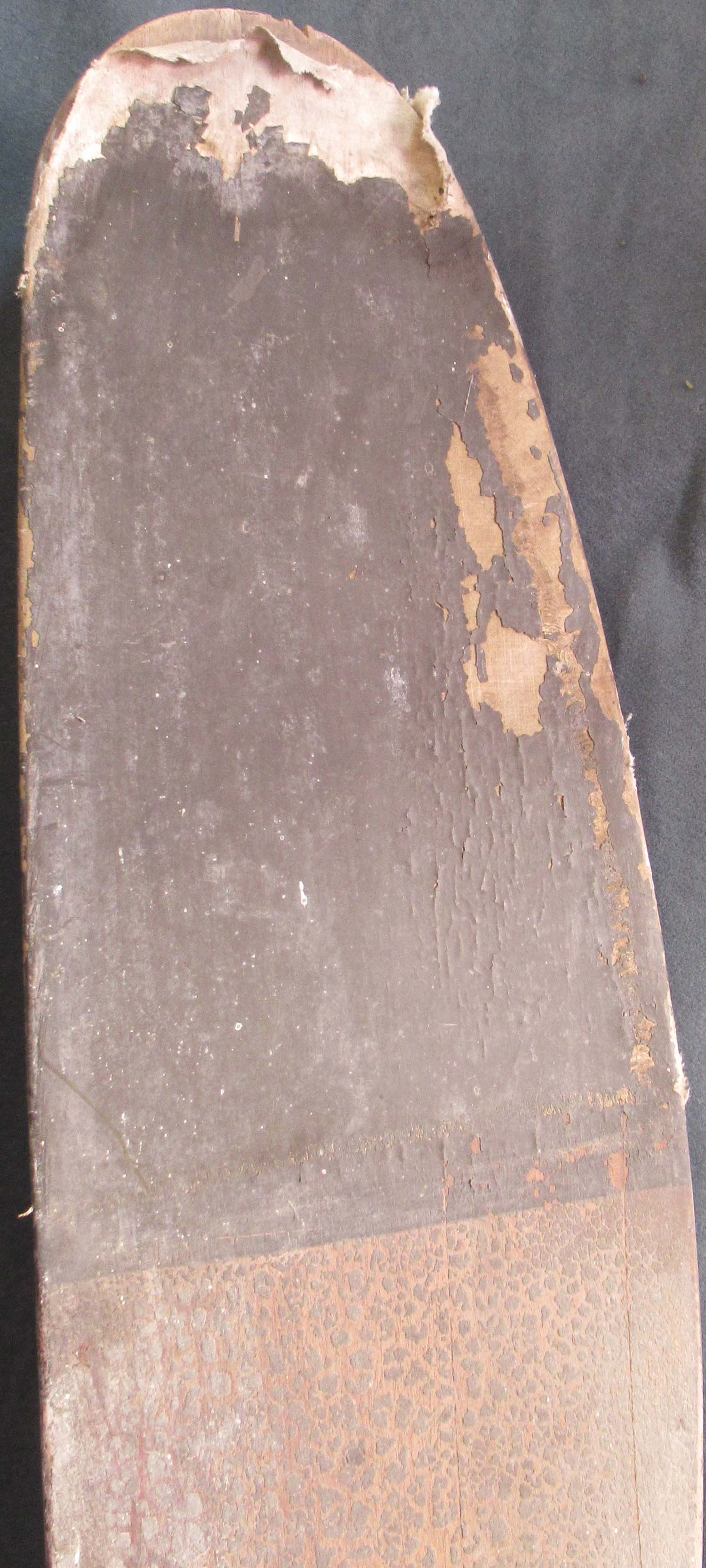
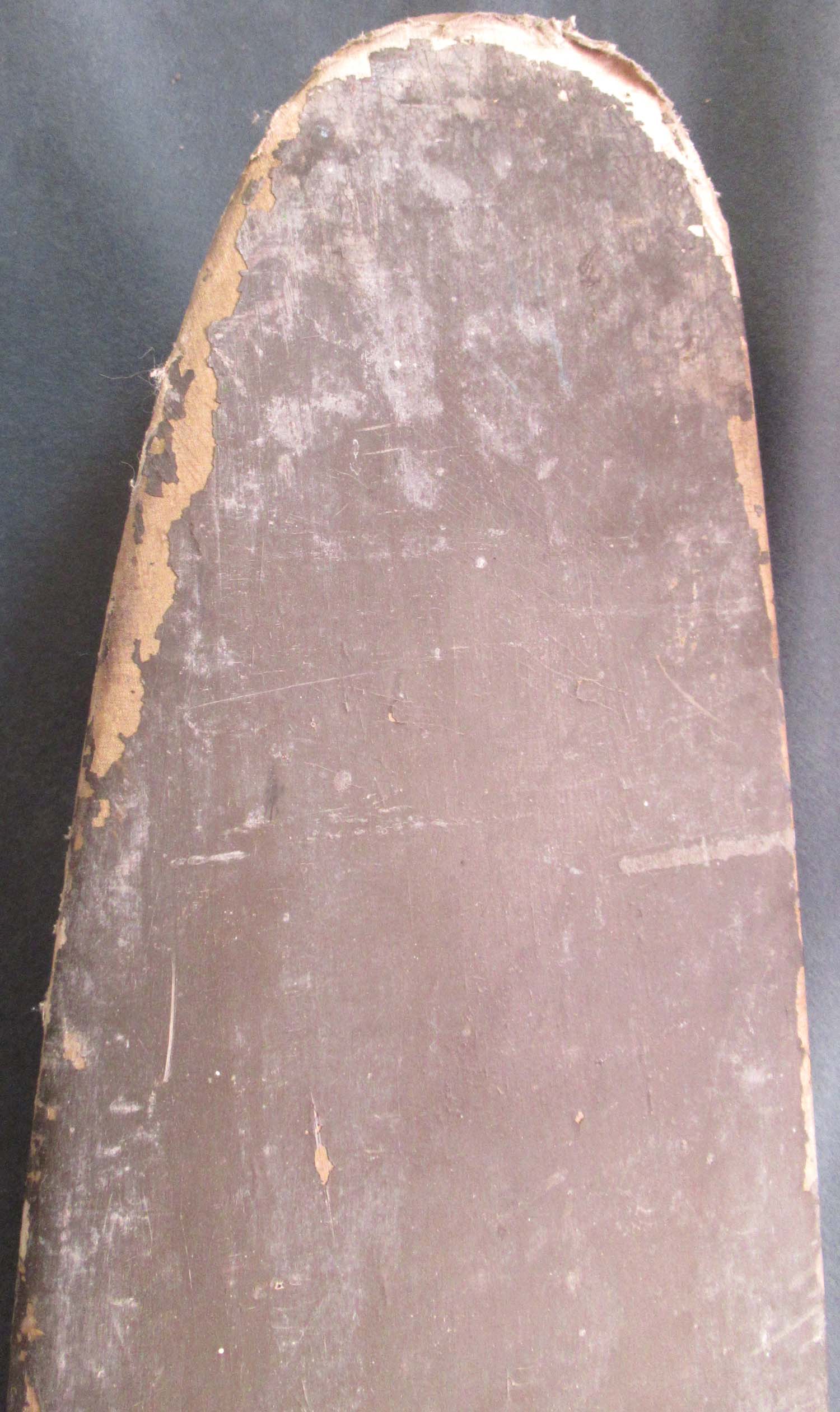 |
|
Bristol Scout
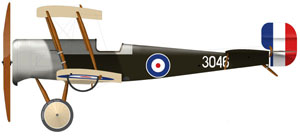
Sopwith Baby
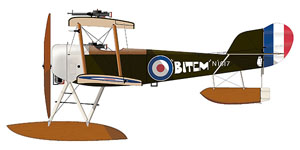
Sopwith Strutter
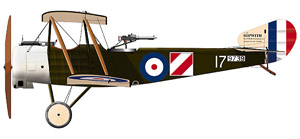
Sopwith Triplane
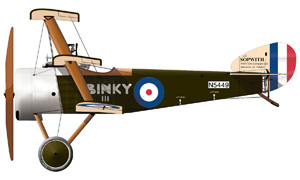
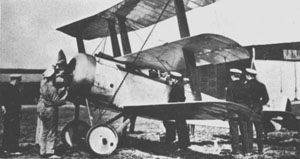
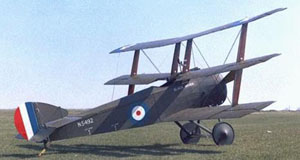
Sopwith Baby Seaplane

Avian
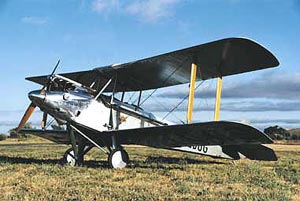
|
Military aviation in Britain began in 1878 when the Royal
Engineers formed a Balloon unit. However, it was not until
1907 that a powered army airship became operational. The
first Air Battalion was established in 1911. At first
progress was slow and by 1912 the Air Battalion only had
eleven qualified pilots compared to 263 in the French Army
Air Service
Great Britain
founded the Royal Flying Corps (RFC) in May 1912. It was
decided that initially the BE-2 would be the main fighter
plane. By the end of 1912 the RFC had one squadron of
airships and three of aircraft. Each squadron had twelve
machines.
At the
beginning of the war the RFC mainly used the BE-2, Farman
MF-7, Avro 504, Vickers FB5, Bristol Scout, and the
F.E.2.
By May 1915, the Royal Flying Corps had 166 aircraft.
Therefore the vast majority of the operations on the Western
Front was carried out by the Aéronautique Militaire, which
had 1,150 aircraft available.
In August 1915
Hugh Trenchard became the new RFC field commander. Trenchard
took a much more aggressive approach and insisted on
non-stop offensive patrols over enemy lines. British
casualties were high, and by 1916, an average of two aircrew
crew were lost every day. It became even worse the following
year, and in the spring of 1917 the RFC were losing nearly
fifty aircraft a week.
By the time the
Battle of the Somme started in July 1916 the RFC had a total
strength of twenty-seven squadrons (421 aircraft), with four
kite-balloon squadrons and fourteen balloons. The squadrons
were organised into four brigades, each of which worked with
one of the British armies.
It was only with the arrival of improved fighter planes such
as the Bristol Fighter, Sopwith Pup, Sopwith Camel, S.E.5
and Airco DH-2 that losses began to decline. Britain also
developed new bombers such as the Handley Page and Airco
DH-4. By the end of 1917 the British has established their
superiority over the German airforce.
General Hugh Trenchard, the RFC field commander in
France, was a strong supporter of strategic bombing.
Eventually, in January 1918, Trenchard was appointed chief
of staff to the Royal Air Force with the promise of being
able to create a mass bombing fleet of aircraft. By the end
of the war the RAF operated 4,000 combat aircraft and
employed 114,000 people.
DH2
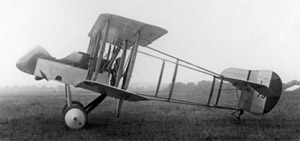
DH5
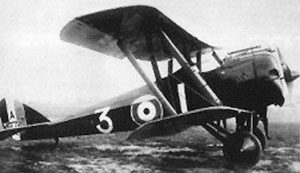
Moraine
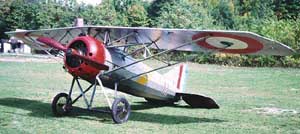
Bristol Scout
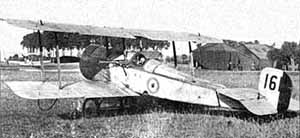
Click for WW2 Props
|
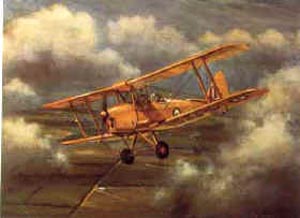 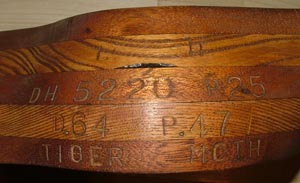 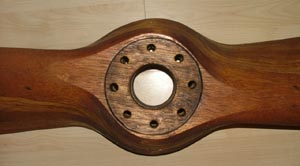 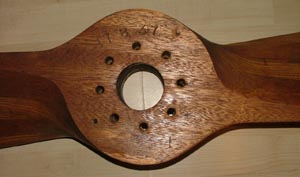
Prefer collection but
shipping can be arranged worldwide
contact us |
Tiger Moth Propeller
Available NOW
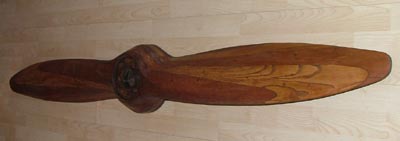
This is a superb wooden
propeller for a Tiger Moth, Hand made using traditional
methods by our craftsman, given an authentic look using the
correct markings. We only use good quality Ash and Mahogany.
We can produce props to your specification in materials and
glue if you wish to get them approved for flying. This one
is perfectly balanced but for sale as
DISPLAY
ONLY.
Here are two short video
clips of the propeller
Video 1
Video2
£1050


|
|
Click on pictures to enlarge
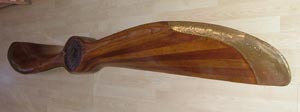
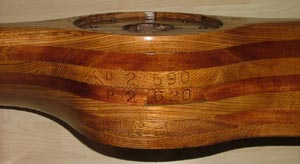
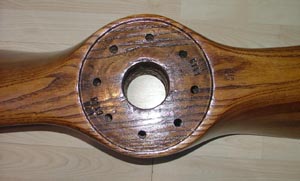
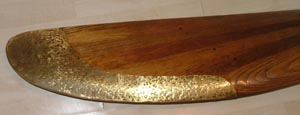
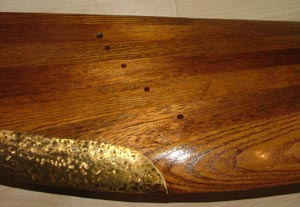
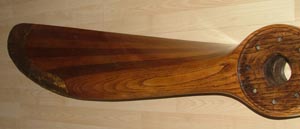
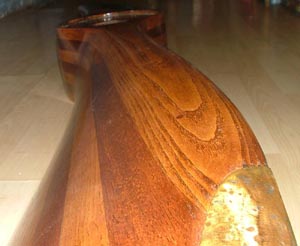
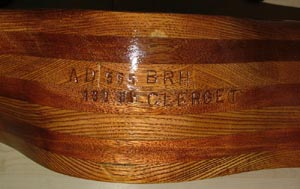
£1500


|
RFC WW1 Sopwith Baby 8' 6"FT Wooden Propeller
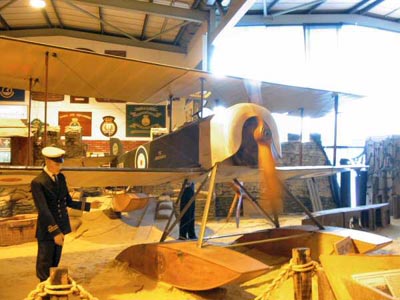
This is a superb wooden
propeller for a Sopwith Baby a
Classic WW1 Biplane Seaplane.
10Ft 6 inches in diameter hand made using
traditional methods by our craftsman, They are marked
correctly with period stamps. We
only use good quality Ash and Mahogany.
I do not like to call it a repro or copy as it does not do
it justice and suggests they are somehow inferior to the
ones produced in the early 1900s which it is not. It is made
to original specs and identical
in every way to the ones made 80 years ago, using the same
labour intensive techniques. The laminate's are locked using
dowels and traditional glue.
It took our craftsman 10 days to make this awesome
propeller. They are not massed produced. We have a
large inventory of WW1 Propeller's.
We can produce props to your specification in materials and
glue if you wish to get them approved for flying. This one
is balanced but for sale as DISPLAY ONLY.

The Sopwith Baby traces its
origins to the two-seat Sopwith Tabloid (or Scout) built by
Sopwith in November 1913, and introduced into RFC service in
the following month. It gained fame when a modified version
won the Schneider trophy in 1914. However it was only in
January 1915 that the RNAS placed formal contracts for the
Baby. In production form, the Baby did not differ much from
the Schneider trophy winner.
The Baby was deployed aboard
seaplane carriers, cruisers, trawlers, minelayers, and
various other ships. An attempt was made to deploy it even
on a submarine! Babies were used to thwart enemy airship
attacks as far as possible from home waters.
Besides Sopwith, the Blackburn,
Fairey, and Parnall companies also built Babies.
Additionally the SA Aeronautica Gio Ansaldo of Turin also
built the Baby under license in Italy. Babies served with
Canada, the US, France, Chile, Greece and Norway. Several
Babies were built in Norway as replacements where they
served until as late as 1930. Norwegian Babies were lent to
Roald Amundsen for use in his polar expeditions. Altogether,
about 700 Babies were produced.
Will arrange shipping worldwide.
Please make your own estimation of shipping costs. We send
using a special courier and they get fed up quoting me for
all the destinations I get asked to post to. They are
competitive and you can of coarse collect personally or
arrange your own shipping. It weighs
35Kgs and is a little over 2.6
metres by 0.3 meters wide
by 0.16 metres deep. It will be
sent at cost plus a £10 charge for packing. I will protect
the blade tips with thick cardboard and seal with layers
of bubble wrap. If you want a crate made we can do this but
it will cost extra.
The Metal Strips on the
Propeller Edges are Not Included
|
|
Click
pictures for bigger image
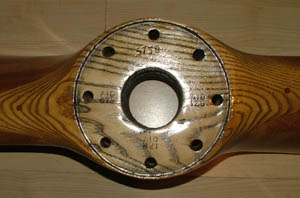
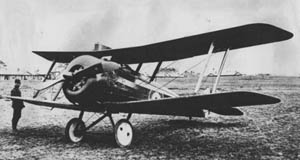
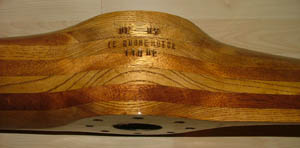
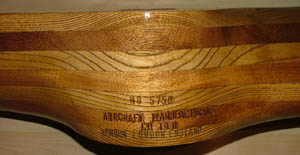
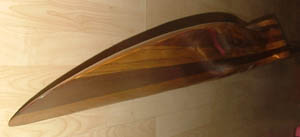
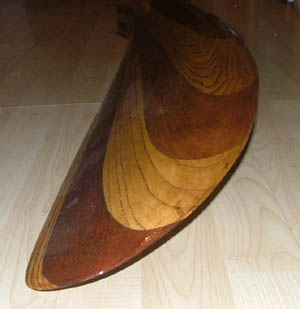
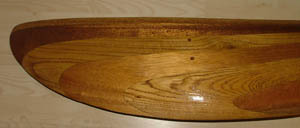
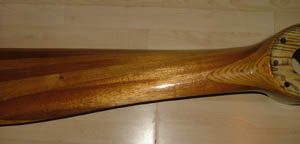
|
RFC WW1 DH5 8' 6"FT Wooden Propeller
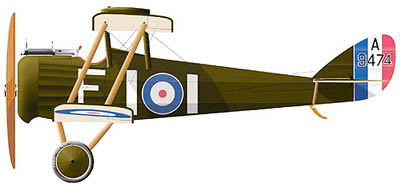
Click pictures for bigger
image

This is a superb wooden
propeller for a De Havilland DH5 over
8Ft in diameter hand made using
traditional methods by our craftsman, They are marked
correctly with period stamps. We
only use good quality Ash and Mahogany.
I do not like to call it a repro or copy as it does not do
it justice and suggests they are somehow inferior to the
ones produced in the early 1900s which it is not. It is made
to original specs and identical
in every way to the ones made 80 years ago, using the same
labour intensive techniques. The laminate's are locked using
dowels and traditional glue.
It took our craftsman 10 days to make this awesome
propeller. They are not massed produced. We have a
large inventory of WW1 Propeller's.
We can produce props to your specification in materials and
glue if you wish to get them approved for flying. This one
is balanced but for sale as DISPLAY ONLY.
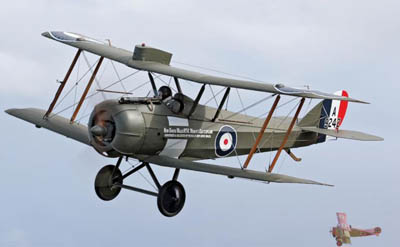
Unlike other
biplane fighters of its day, the Airco D.H.5 featured an
unusual wing configuration. By positioning the upper wing
toward the rear of the cockpit, designer Geoffrey de
Havilland was able to improve the pilot's field of vision.
Despite this improvement, at high altitude the D.H.5 was a
poor performer due to its underpowered engine. By the end of
1917, it was removed from combat and used as a trainer
£1500


Will arrange shipping worldwide.
Please make your own estimation of shipping costs. We send
using a special courier and they get fed up quoting me for
all the destinations I get asked to post to. They are
competitive and you can of coarse collect personally or
arrange your own shipping. It weighs
35Kgs and is a little over 2.6
metres by 0.3 meters wide
by 0.16 metres deep. It will be
sent at cost plus a £10 charge for packing. I will protect
the blade tips with thick cardboard and seal with layers
of bubble wrap. If you want a crate made we can do this but
it will cost extra.
|
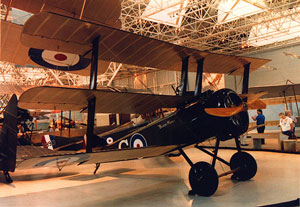
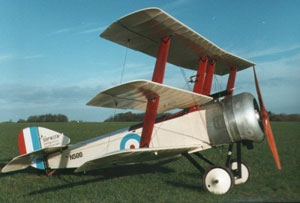
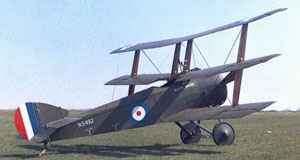
The Sopwith Triplane
prototype appeared in May 1916 and was found to be highly
manoeuvrable with a phenomenal rate of climb. Both the Royal
Flying Corps and the Royal Naval Air Service ordered the
type but policy changes led to the Triplane only being used
by the Royal Naval Air Service fighter squadrons on the
Western Front. Several of the Royal Naval Air Squadron
pilots scored many victories while flying the type and it
made such a profound impression on the Germans that a
specific request was made to their aircraft manufacturers to
design and produce triplane fighters. Only the Fokker Dr1
was built in quantity and it gained fame as the aircraft
frequently flown by Manfred von Richthofen. The triplane
concept had a brief life and in less than two years it had
been eclipsed by the new and more powerful biplane fighters
on both sides.


This is a Massive
superb wooden propeller for a Sopwith
Triplane.A Massive 10ft 10 inches in
diameter hand made using traditional
methods by our craftsman,Note the unique shape of the
triplane prop with its flat ends. They are marked correctly
with period stamps. We only use
good quality Ash and Mahogany. I
do not like to call it a repro or copy as it does not do it
justice and suggests they are somehow inferior to the ones
produced in the early 1900s which it is not. It is made to
original specs and identical in
every way to the ones made 80 years ago, using the same
labour intensive techniques. The laminate's are locked using
dowels and traditional glue.
It took our craftsman 10 days to make this awesome
propeller. They are not massed produced. We have a
large inventory of WW1 Propeller's
and its unlikely we will produce another of these for six
month's. We can produce props to your specification in
materials and glue if you wish to get them approved for
flying. This one is balanced but for sale as DISPLAY ONLY.
Prefer collection but will arrange shipping worldwide.
Please make your own estimation of shipping costs. We send
using a special courier and they get fed up quoting me for
all the destinations i get asked to post to. They are
competitive and you can of coarse collect personally or
arrange your own shipping. It weighs
35Kgs and is a little over 2.7
metres by 0.3 meters wide
by 0.16 metres deep. It will be
sent at cost plus a £10 charge for packing. I will protect
the blade tips with thick cardboard and seal with 5 layers
of bubble wrap. If you want a crate made we can do this but
it will cost extra.
|
RFC WW1 Sopwith Triplane 8' 10"FT Wooden Propeller
Click on picture's to
enlarge
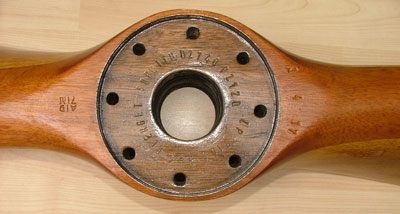
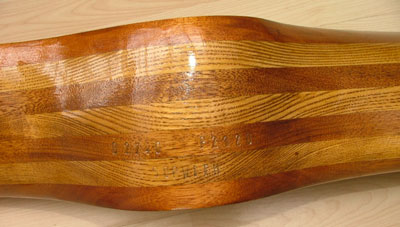
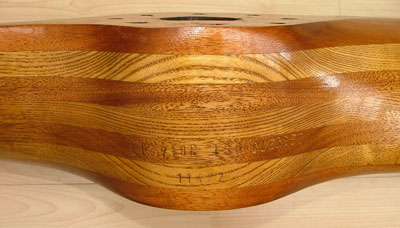
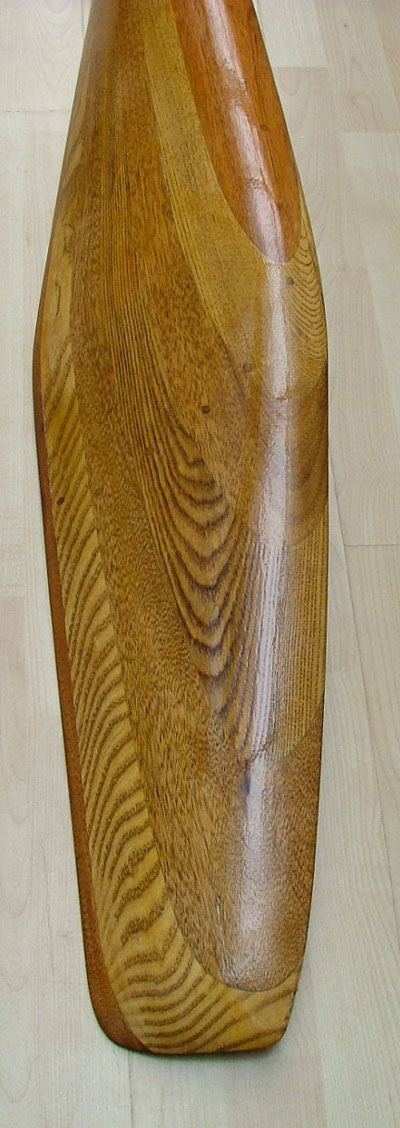

£1500


|


Click on the pictures to enlarge
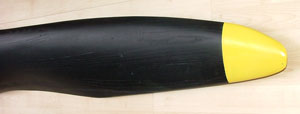
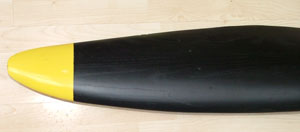 |
Watts Propeller (pg1 prop)
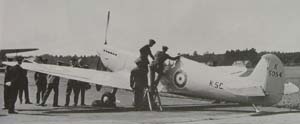
This is a Watts propeller. This type of
propeller
was used on very early Spitfire's the protype, Mk1 and
Hurricane Mk1 in very limited numbers.
They were soon
replaced by the three bladed variable pitch props. I believe
this type of prop was fitted to the late 1930s fighters such
as the Gladiator. Hand
made using
traditional methods
by our craftsman. They are marked correctly with period
stamps. We only use good quality Ash and Mahogany. I do not
like to call it a repro or copy as it does not do it justice
and suggests they are somehow inferior to the ones produced
in the early 1930s which it is not. It is made to original
specs and identical in every way to the ones made 70 years
ago, using the same labour intensive techniques. The
laminate's are locked using dowels and
traditional glue.
It took our craftsman 10 days to make this awesome
propeller. They are not massed produced. We have a large
inventory of Propeller's. We can produce props to your
specification in materials and glue if you wish to get them
approved for flying. This one is balanced but for sale as
DISPLAY ONLY
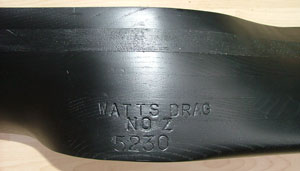
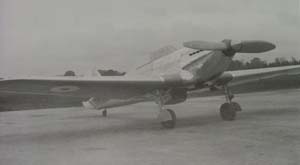
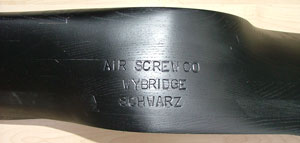
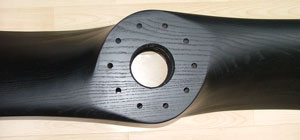
£1500


|
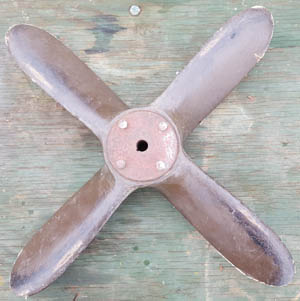
Click on the pictures to enlarge
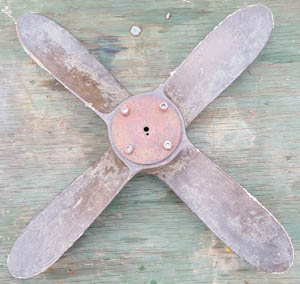 |
Wood WWI auxiliary British airship Propeller (pg1 prop)
Here is a small wooden auxiliary wooden prop
with a canvas finish its is 100% original not one of our new made props.
Research leads me to believe this prop was used on British WWI airships as an
auxiliary to power a generator or rudder servos. It has some numbers on the
steel plate as follows.
09.6 1038
Its has an overall diameter of 65mm
£395


|
 |
Wood WWI Propeller (pg1 prop)
This a prop I purchased its
not one that we make and not sure of its application. A nice
display piece over 6ft long with brass work.

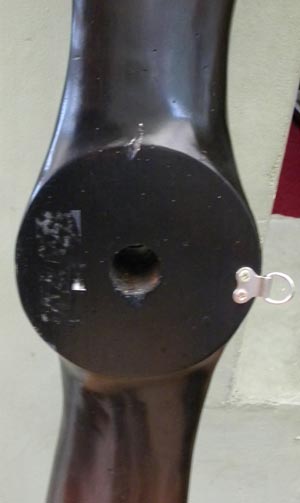
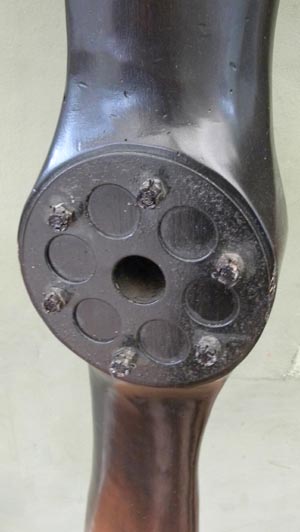
Shipped at
cost price not added to cart
Out of stock
|
|
|
